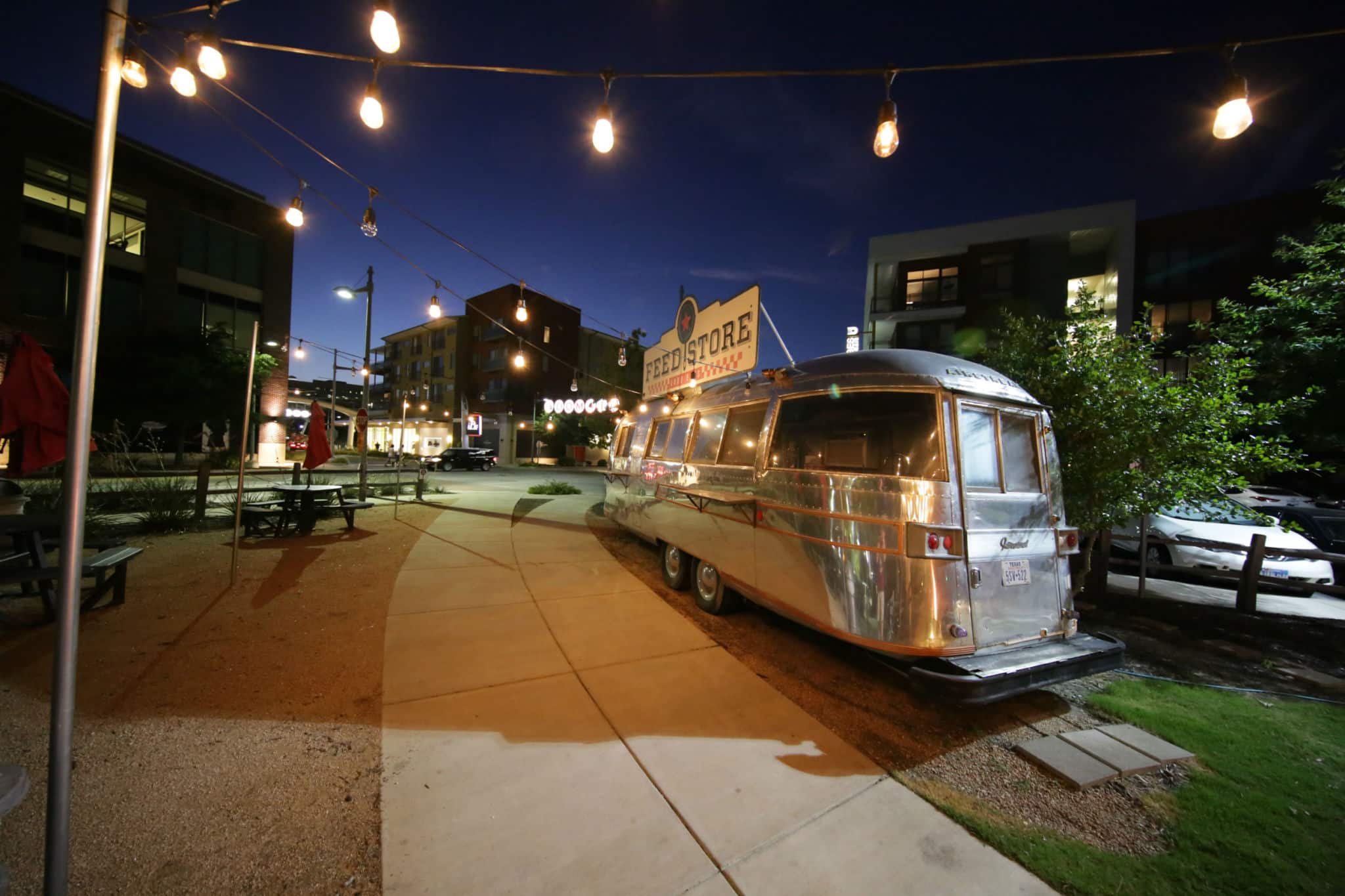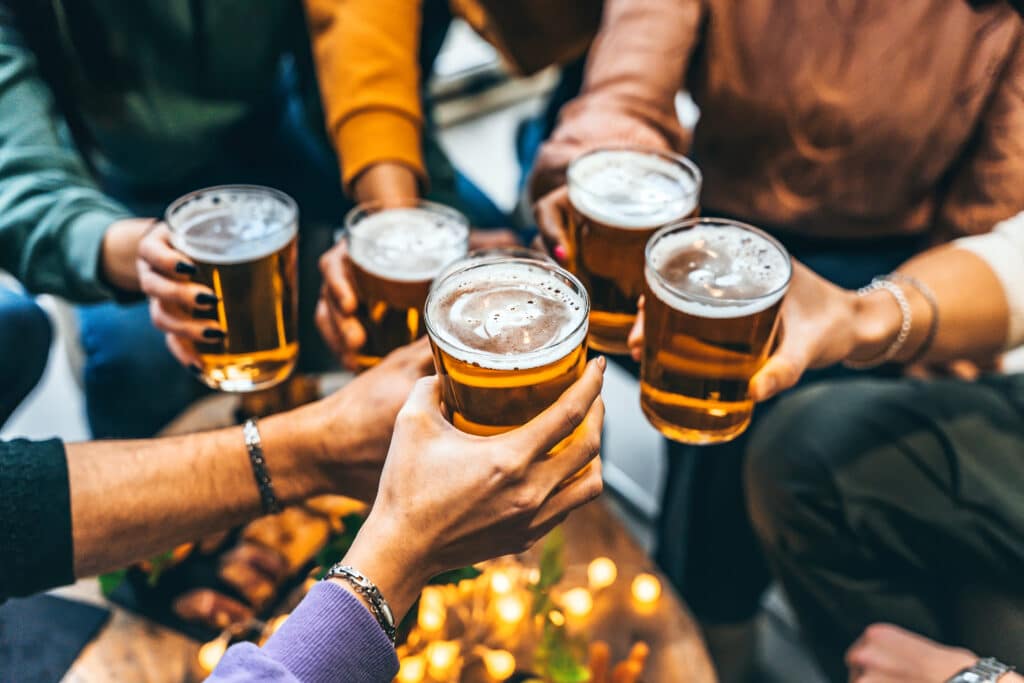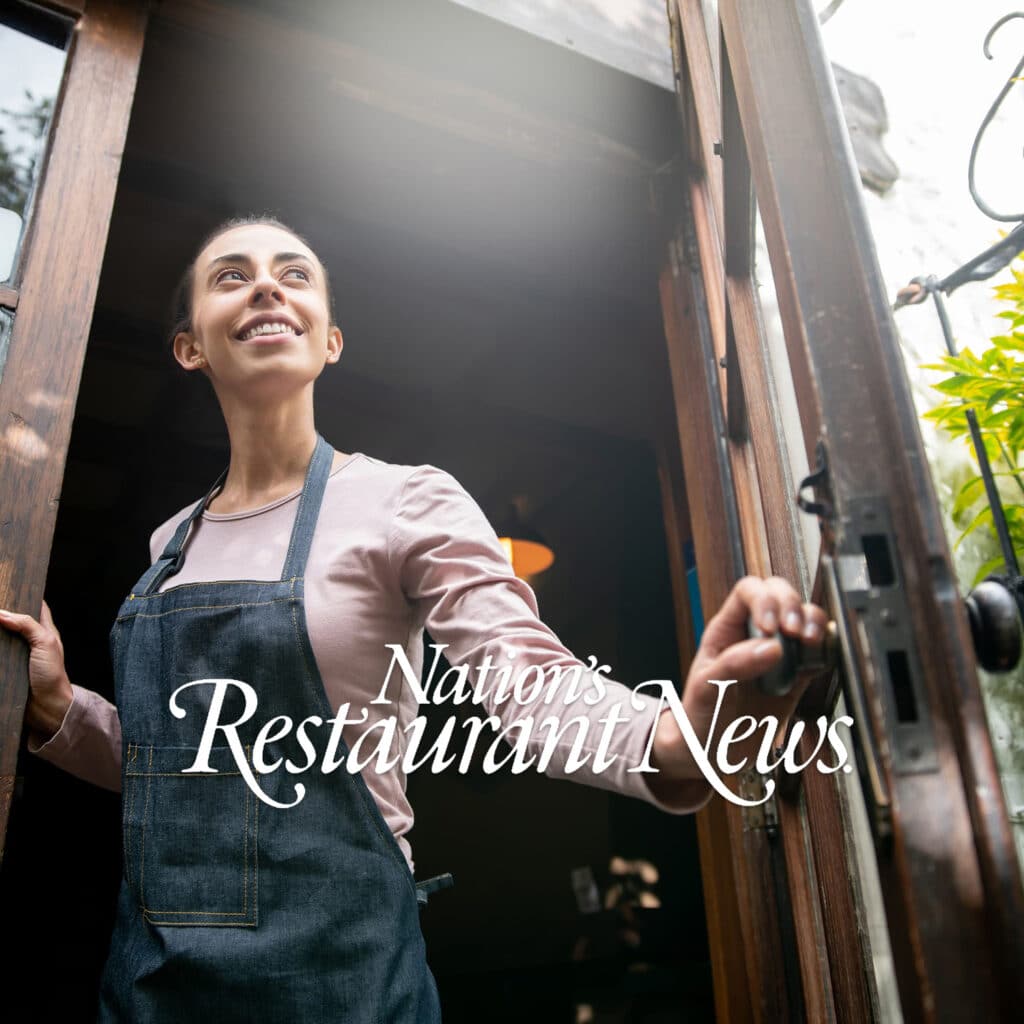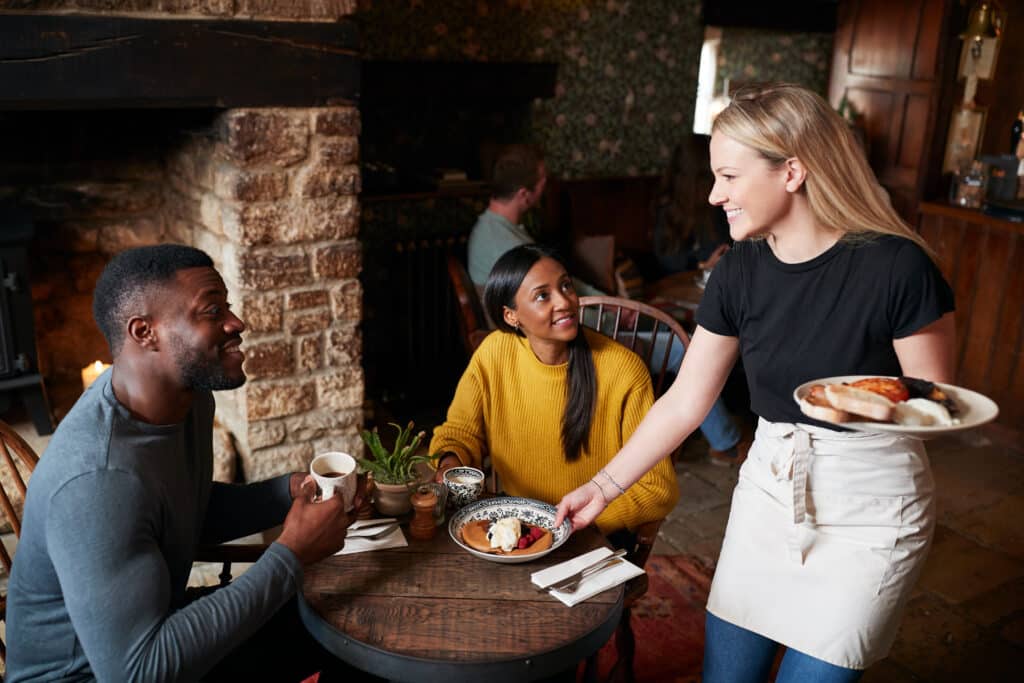Your menu’s design has more power than you may realize. Small tweaks can increase your revenue by up to 35%. The nine things you need to consider when redesigning your menu are:
1. Placement power
When we’re looking at a standard two- or three-fold menu, our eyes typically start in the middle of a page, then move to the top right, then top left in what is referred to as the “eye gaze path.” If you look at this path, you’ll see that the majority of time is spent looking at the top portion of your menu, in a triangular formation.
This is also sometimes called the “Golden Triangle,” because it encompasses some pretty high-value real estate when it comes to menu item placement. For this reason, consider placing high-margin dishes at the center and upper-right corner of your menu. When arranged correctly, a great menu works as a silent salesperson, doing most of the heavy lifting for you.
2. Maximize the impact of “negative space”
If a menu is crammed-full with text, customers’ eyes will naturally be drawn to any open spaces. As a result, brands can increase the likelihood that their most profitable menu items will get ordered by creating that “negative space” around those items.
That simple action can automatically boost orders, and as a result, sales of your restaurant’s most profitable items. And on that note, while photos do help sell certain dishes, they should be used wisely and sparingly. Typically the use of one picture per menu page can increase sales of that item up to 30%.
3. Use a decoy
Consider placing lower-priced, high-profit menu options as decoys right next to higher-priced menu items. For example, box your higher-end offerings right below some lower-priced fare that may be lower in purchase price, but has a higher margin than those higher-end dishes. By doing this simple action, guests who order the more economical fare feel like they’ve found a deal and your brand racks up a more profitable sale.
4. Remember the magic menu number: 7
Work to limit the number of items in each menu section to no more than seven items. Any more than that “magic seven” creates a so-called “paradox of choice” for guests since more options increase the anxiety customers feel to make a choice, leading them to feel overwhelmed or confused.
As a result, many will simply default to ordering an item they’ve had before thinking, “Well, I don’t want to choose unwisely and spend too much money, so I guess I’ll settle for something cheap and safe.”
5. Use color to influence
Colors evoke a whole range of customer reactions since it’s been shown that customers are driven subconsciously by what they see. In fact, colors can sometimes even speak louder than words, so the careful use (and sometimes even outright avoidance) of certain colors on your menu can be essential in driving purchase decisions.
Here are how different primary colors can impact diners’ emotions:
Red — This is the color of action and passion, so limited use of red can motivate customers to order an associated item.
Orange — This appetite-stimulating color can be ideal in encouraging impulse in menu item selection.
Yellow — This color of “Yield” signs and traffic “caution” lights is an attention-getter that makes us feel happy, so when it is used legibly (watch out for light shades and avoid yellow completely in dimly lit restaurants) it can be an excellent way to capture diners attention.
Green — This “freshness” color can increase the appeal of salads and seasonal menu options.
Blue — Unless your brand has a very strong connection with seafood, this hue can make guests feel tired, so limit its use.
These pointers should give you some menu design parameters. But, we recommend designing test menu versions to see which combinations of methods work best for your brand. Ask friends, family, and regulars to order from the new menu to evaluate whether your new menu marketing tool is a success.
6. Avoid column pricing and the use of the $ dollar sign
A lot of restaurants arrange their menus with a price on the far right-hand side. While that works for some types of restaurants, the use of aligned pricing can sometimes cause customers to seek out and order the lowest-priced item they can find instead of
ordering the one they are truly interested in. If you manage a restaurant whose strategy is not having the lowest price, you will want to find ways to deemphasize the pricing.
Some of the ways you can do that are:
- Don’t use decimals. The use of decimals can sometimes make numbers look larger than they need to. This causes customers to spend less. Which one would you rather order, $15.00 or 15?
- Don’t use the $ sign. Research has found that guests given the numeral-only menu spend significantly more than those who received the menu with prices written out in words or menus showing a dollar sign.
- Use descriptions to pique interest. One of the key opportunities you have to influence your guests towards ordering a certain item is in the description. Menu items that have unique titles and descriptions can increase their sales up to 27%. For example: If you went to a restaurant for lunch and one of the menu items was chicken salad, which one would you be more willing to purchase? Chicken Salad Sandwich OR Grandma’s Famous Chicken Salad Sandwich. Nostalgia is a powerful tool that restaurants can use to boost appeal. One way to make writing descriptions easier is to add different words and elements that appeal to taste, texture, preparation, geography, nostalgia, or brand.
8. Appeal to touch
Great menus don’t just appeal to your eyes or your appetite, they also appeal to touch. Being cognizant about what size your menus are, how easy they are to handle, and what texture they are will help you when you are creating versions of your menu to test. If you are a high-end restaurant, you want to make sure that is reflected in all areas of the customer experience – including your menu.
9. Consider separate menus
Having separate menus for entrees, desserts, and drinks can help you not only keep your guests focused on the order at hand, but also better segment, organize, and upsell. Finally, remember to take the time to train staff on the new menu design and which menu items are priorities. This knowledge will help them guide customers to more profitable dishes to improve the customer experience while boosting your bottom line.
How To Evaluate Your New Menu Design
The final phase of menu engineering is evaluating your new design. The best way to do this is to simply compare item sales with the new menu against what they were before the redesign.
With Compeat’s software, you can do this through our menu engineering report. All you would need to do is select the new time period and compare it against the old one. Make sure you are measuring the same time span for each. You will also want to verify that the results you are seeing are statistically significant and not just a temporary change. Assuming you have good order volume for the majority of your menu items you should start seeing statistically significant changes occurring after 1-2 months.
If the new design is a success you will notice your high-profit dishes are selling more often, your food cost percentages are healthier, and your revenue has increased.



